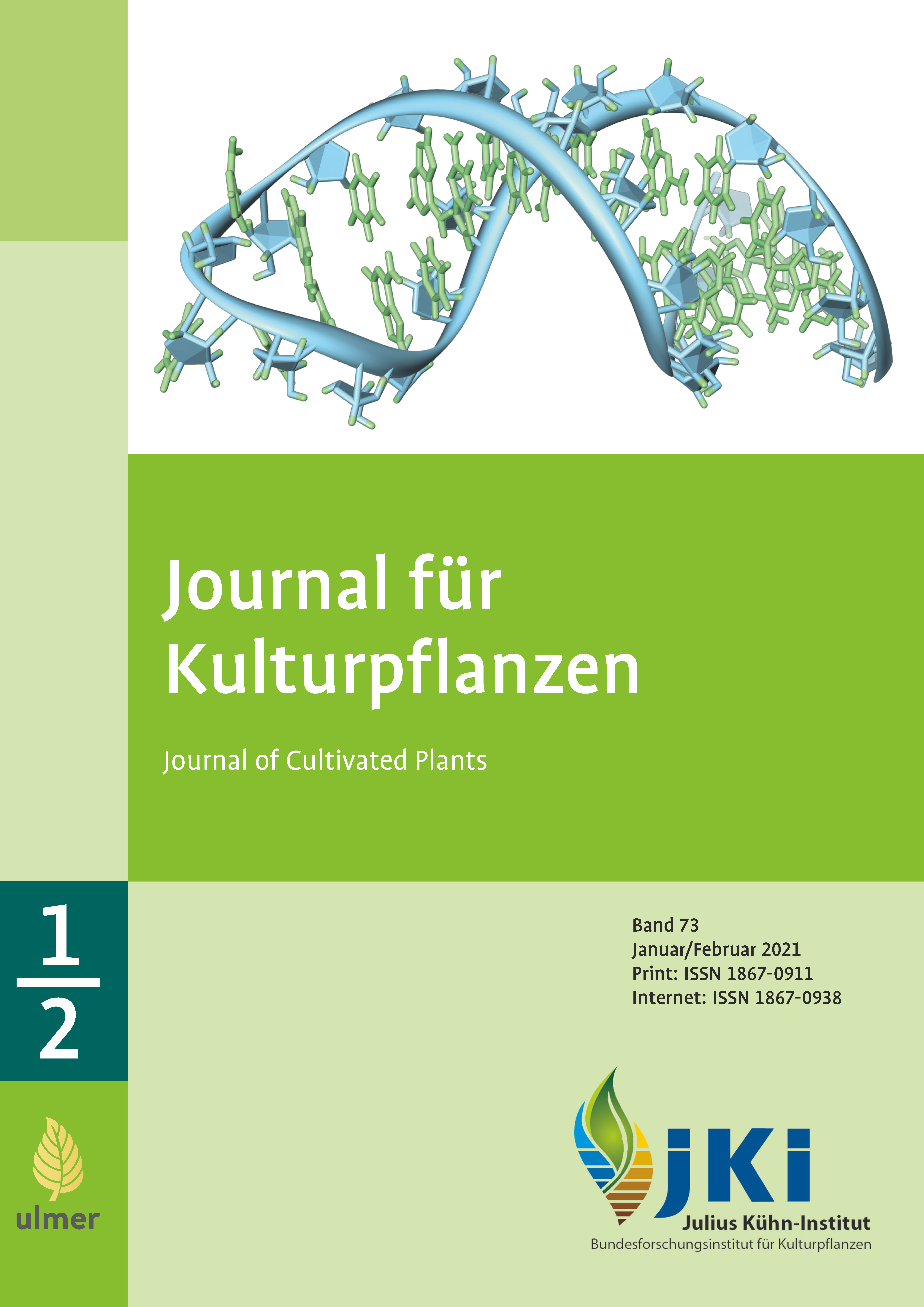Determination of pathotypes of tomato leaf mold, <em>Fulvia fulva</em>, occurring in Germany
DOI:
https://doi.org/10.5073/JfK.2021.01-02.04Keywords:
tomato, tomato leaf mold, Fulvia fulva, pathotypes, occurence, GermanyAbstract
Tomato leaf mold caused by Fulvia fulva (syn. Passalora fulva, Cladosporium fulvum) is an increasing problem in organically grown plants as well as in conventional and integrated cultivation, due to the reduction of applicable plant protection products. To counter the impacts on yield it is recommended to grow resistant varieties. In recent years, however, the frequency of breakdown of the monogenic resistance of these varieties has increased. To date, there is no knowledge of the occurrence of pathotypes in Germany. Nevertheless, knowledge about pathotypes is essential to conduct effective breeding work on new tomato varieties.
Together with the non-profit breeders’ association Kultursaat e. V., the Julius Kühn-Institute has designed a project supported by the Federal Programme “Organic Farming and Other Forms of Sustainable Agriculture”. The aim of the project was to test a new breeding strategy and to select new sources of resistance. An aspect of the project concerned with the current appearance of pathotypes of Fulvia fulva in Germany. Various isolates from submissions were entered into a pathogen bank and to a large degree identified in climatic chamber tests using a tomato differential set (MATREF). From these results, an overwiew was created which depicts the spatial occurence of different pathotypes in Germany and contains relevant information for breeding work during the project and growing in practice.
Downloads
Published
Issue
Section
License
The content of the journal is licensed under the Creative Commons Attribution 4.0 License. Any user is free to share and adapt (remix, transform, build upon) the content as long as the original publication is attributed (authors, title, year, journal, issue, pages).
The copyright of the published work remains with the authors. The authors grant the Journal of Cultivated Plants, the Julius Kühn-Institut and the OpenAgrar repository the non-exclusive right to distribute and exploit the work.







